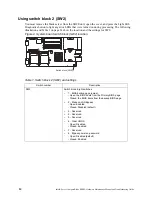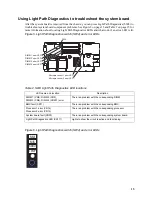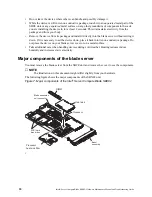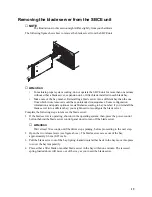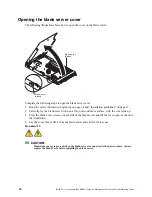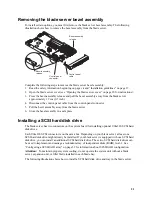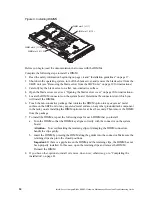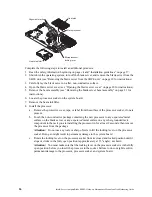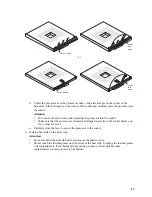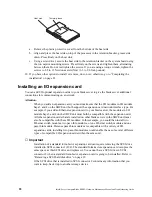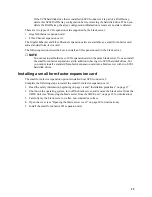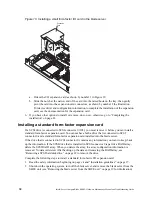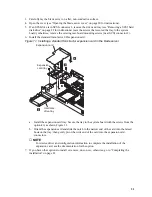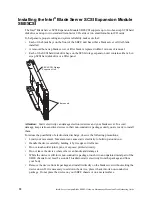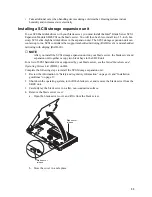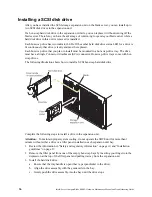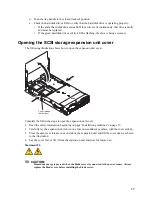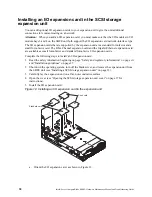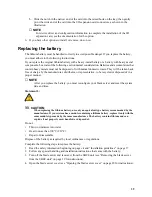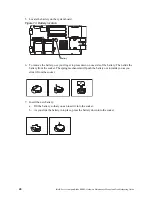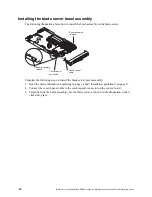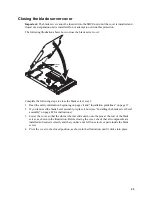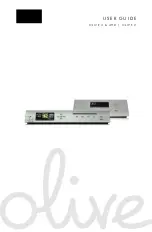
28
Intel® Server Compute Blade SBX82: Hardware Maintenance Manual and Troubleshooting Guide
a.
Remove the plastic protective cover from the bottom of the heat sink.
b.
Align and place the heat sink on top of the processor in the retention bracket, grease side
down. Press firmly on the heat sink.
c.
Using a screwdriver, secure the heat sink to the retention bracket on the system board using
the two captive mounting screws. Press firmly on the screws and tighten them, alternating
between them. Do not overtighten the screws. If you are using a torque wrench, tighten the
screws to 8.5 to 13 Newton-meters (Nm) (6.3 to 9.6 foot-pounds).
10. If you have other options to install or remove, do so now; otherwise, go to “Completing the
installation” on page 41.
Installing an I/O expansion card
You can add I/O optional expansion cards to your blade server to give the blade server additional
connections for communicating on a network.
Attention:
When you add an expansion card, you must make sure that the I/O modules in I/O module
bays 3 and 4 on the SBCE unit both support the expansion card network-interface type. For
example, if you add an Ethernet expansion card to your blade server, the modules in I/O
module bays 3 and 4 on the SBCE unit must both be compatible with the expansion card.
All other expansion cards that are installed on other blade servers in the SBCE unit must
also be compatible with these I/O modules. In this example, you could then install two
Ethernet switch modules, two pass-thru modules, or one Ethernet switch module and one
pass-thru module. Because pass-thru modules are compatible with a variety of I/O
expansion cards, installing two pass-thru modules would enable the use of several different
types of compatible I/O expansion cards within the same unit.
✏
Important
Installation of a standard form-factor expansion card can require removing the SCSI drive
installed in SCSI connector 2 (J94). The standard form-factor expansion card occupies the
same space as this SCSI drive and replaces it. You cannot have a SCSI drive in SCSI
connector 2 when a standard form-factor expansion card is going to be installed. Refer to
“Removing a SCSI hard disk drive” on page 22.
If the SCSI drive that is installed in SCSI connector 2 contains any information that you
want to keep, back it up to another storage device.
Heat sink
Thermal grease
Summary of Contents for 8832L1X
Page 62: ...46 Intel Server Compute Blade SBX82 Hardware Maintenance Manual and Troubleshooting Guide...
Page 148: ...132 Intel Server Compute Blade SBX82 Hardware Maintenance Manual and Troubleshooting Guide...
Page 154: ...138 Intel Server Compute Blade SBX82 Hardware Maintenance Manual and Troubleshooting Guide...

